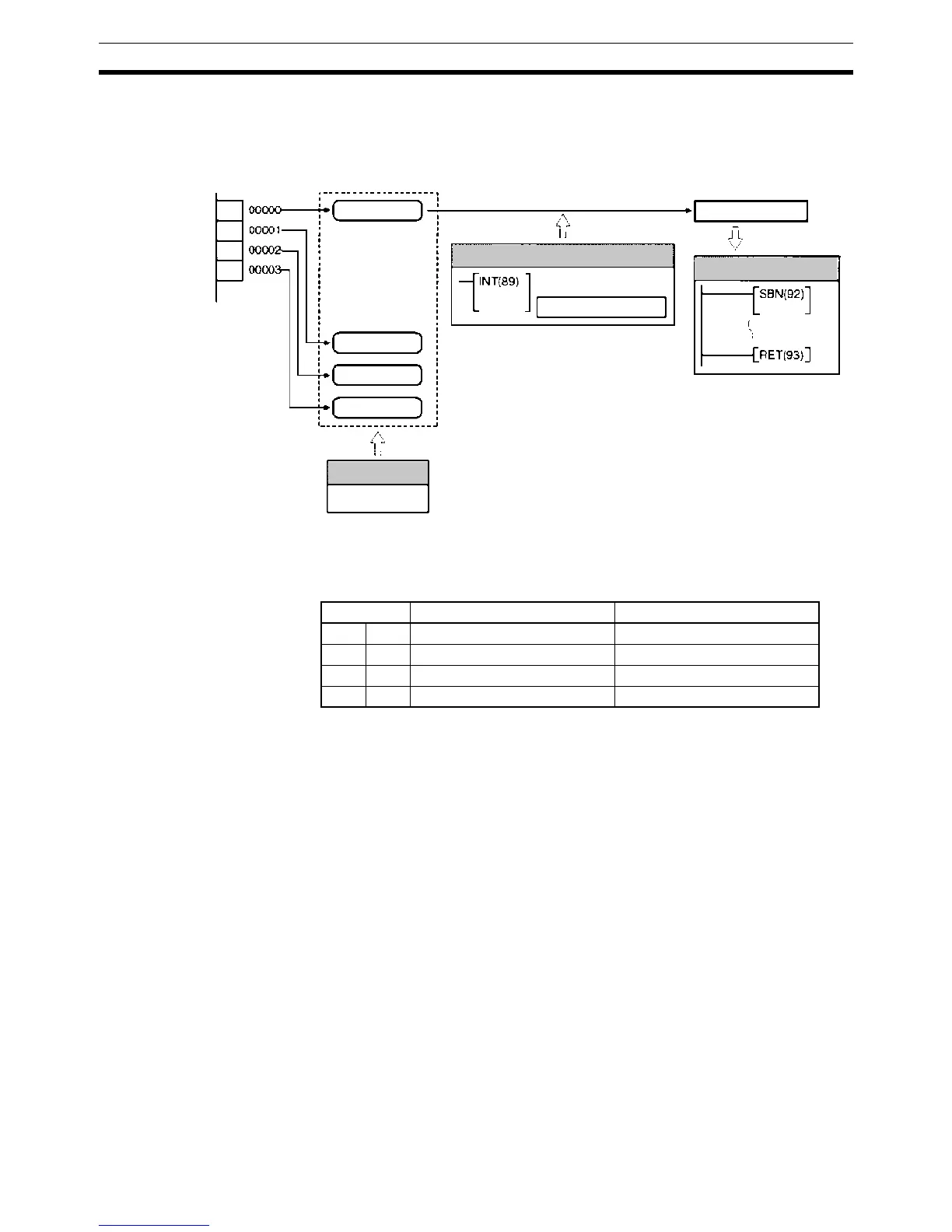24
Interrupt Functions Section 1-4
4. Program the associated program sections.
a) Use INT(89) to unmask the input interrupt. (See page 27 for more de-
tails.)
b) Write an interrupt subroutine within SBN(92) and RET(93).
Procedure
(Counter Mode)
Follow the steps outlined below when using input interrupts in counter mode.
1,2,3... 1. Determine the input interrupt number.
2. Determine the initial count SV.
3. Wire the input. (See page 25 for more details.)
4. Make PC Setup settings. (See page 26 for more details.)
a) Write 1 in the corresponding digit in DM 6628 to indicate that the input
will be used as an input interrupt (input interrupt or counter mode.)
b) Bits in DM 6630 through DM 6633 can be turned ON to cause the input
to be refreshed before the interrupt subroutine is executed.
Interrupt 0
Input interrupt 0
1
2
3
Interrupt 1
Interrupt 2
Interrupt 3
DM 6628
Enable interrupts.
Generate interrupt
.
PC Setup
Ladder Program
Execute specified
subroutine.
Interrupt Subroutine
INTERRUPT CONTROL
Terminal Corresponding bit address Subroutine number
B0 IN0 IR 00000 000
A0 IN1 IR 00001 001
B1 IN2 IR 00002 002
A1 IN3 IR 00003 003
